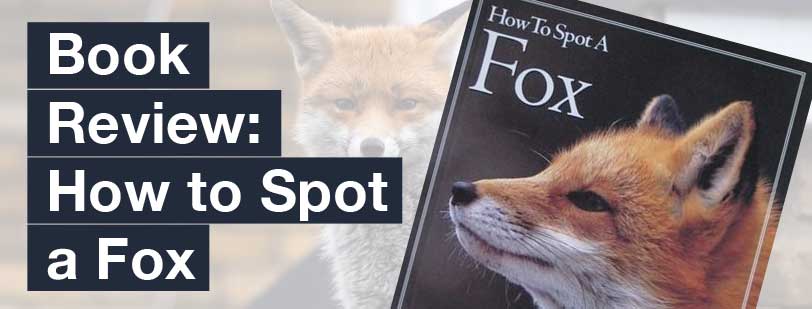How to Spot a Fox by J. David Henry

J. David Henry spent over a decade studying rural foxes in Saskatchewan, Canada and wrote an enthusiastic book, Red Fox: The Catlike Canine, all about his incredibly in depth field experiments.
Though he can’t help but sneak in a few references to his studies, How To Spot A Fox is a much more straightforward manual for how to find foxes in rural areas. If you’re looking for a guide to finding foxes in urban areas, you need to look elsewhere.
In many cases, this book is also North American specific with frequent references to fox behaviour in relation to coyotes, wolves and bob cats, animals that we don’t have in the UK.
That being said, Dr Henry does offer some useful information that is helpful in finding and identifying foxes in any habitat, including things like:
- FOX PAW PRINTS – Some good pictures of fox footprints and the revelation that fox tracks are almost single file (like cats), whereas a dog’s paw prints are double-file. Useful information in identifying if you’re on the trail of a fox or not.
- FOX ENTRY POINT – A great tip if you’re wondering where foxes come into your garden is to pour water on the ground in an area you suspect the fox enters. Make the ground muddy and then check it a couple of days later for paw prints. Use gloves to minimise your scent.
- FOX POO – Fox poo is generally 6.4cm (2.5″) long and quite slender. Because they eat whatever they can find, their poo will often contain hair and bone fragments, unlike domestic dogs or cats.
- FOX URINE – It smells ‘skunky’, is an amber colour and is seen in very small quantities. If you see a large quantity of urine, it’s very unlikely to be from a fox. As it’s often difficult to spot the gender of a fox, looking at their urine marks or seeing a fox urinating is a good way to tell. Urine released in front of the hind legs is a male, urine released behind the hind legs is a female.
Just like J David Henry’s other work, How To Spot A Fox contains excellent and thoroughly-studied information regarding the world of red foxes.
His knowledge of all aspects of fox life like how they find and build dens, how they interact with other foxes, what they heat and how they cache food is absolutely fascinating. It’s the kind of information that only someone who has dedicated a large proportion of their life to foxes could provide.
Even if you don’t live in rural Canada, How To Spot A Fox is a great read, packed full of facts and you’ll be far more knowledgeable about foxes by the end than you were at the start!






